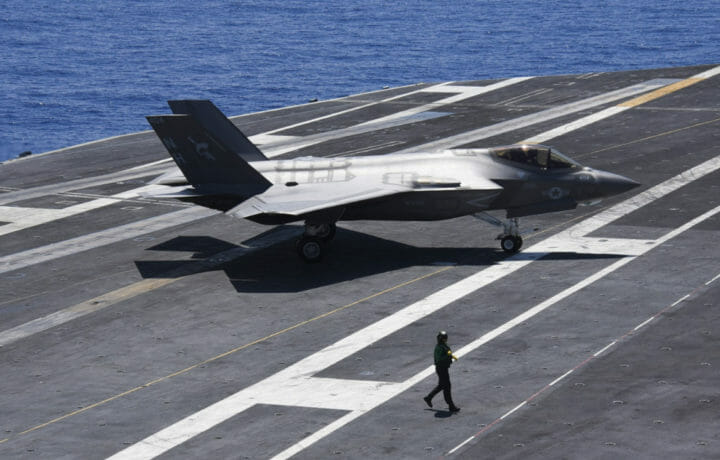China continues with full scale modernize their Navy. Friday’s launch of its third and most advanced aircraft carrier, the Fujian, underscores how quickly China is changing the face of naval operations. The Fujian leapfrogs their current military technologies, in an effort to challenge the might of the US navy. With sea trials expected in days, Chinese President Xi Jinping, is demanding quick modernization and expansion.
Previously, Chinese Navy procurement policy seemed to be quantity over quality. Last winter, Forbes Magazine stated the People’s Liberation Army Navy had 355 front-line warships at least as large as a corvette and 400 total if small coastal missile boats were added in. The U.S. Navy by contrast has 305 front-line ships. Currently, the U.S. appears to have the edge with total number of high-tech missiles at sea.
Many Chinese vessels appeared to be antiquated. The Liaoning, China’s first aircraft carrier was a converted ex-Soviet ship. The Shandong, China’s second carrier was the first domestically built, but based on the old Soviet Liaoning design. Even though these vessels are outdated, they are proving useful for the carrier operations training of a new generation of pilots and naval officers.
Knowing their shortfalls, the Chinese Navy has been modernizing for over two decades. They are becoming a daunting military force in the Western Pacific and now can conduct a growing number of naval operations in the more-distant waters of the Pacific, the Indian Ocean, and the waters around Europe.
The naval maritime environment is rapidly changing with the release of the Fujian on Friday. This advanced aircraft carrier has new combat systems that experts say are closing in on U.S. capabilities. Even though the Fujian is conventionally powered, the carrier is similar in size and capability to the U.S. Ford and Nimitz class carriers. Its electromagnetic aircraft launch system (EMALS) accelerating jet taking offs, enabling the ability for jets to carry more fuel and weapons. Further, this capability allows aircraft to launch at a greater rate, crucial for carrier defense. Only the U.S. Ford-class carrier currently has this capability.
Additionally, China has undertaken a major effort to build up its fleet of guided missile destroyers and vessels needed for anti-surface warfare (ASuW), anti-submarine warfare (ASW), anti-aircraft warfare (AAW), and more strategic long-range cruise missiles for land strikes. Long-range land-attack missiles along with the Fujian’s air wing will provide state-of-the-art firepower for China. Aircraft carriers are essentially a mobile airbase, allowing for rapid, long-term deployment of aircraft and weaponry to a distant combat theater.
With the launch of the Fujian last week, the world understands China’s engineering is now capable of domestically manufacturing all modern naval warfare vessels, including corvettes, frigates, destroyers, amphibious assault ships, and aircraft carriers.
U.S. Navy’s Plan to Counter Chinese Naval Modernization
China’s new naval modernization effort has become a top focus of U.S. defense planning and budgeting experts. Countering Chinese naval operations today and in the future is the current focus for the U.S. Navy and is of great concern to the U.S. Congress.
The Congressional Research Service, a public policy research institute of the U.S. Congress, recently published the report China Naval Modernization: Implications for U.S. Navy Capabilities in March of this year. According to the report, the U.S. Navy is already taking actions to counter China’s naval modernization efforts. The Navy is shifting more of its fleet to the Pacific; with its most-capable ships, aircraft, and personnel to the Pacific. Second, they are engaging and cooperating with allies and other navies in the Indo-Pacific while planning and increasing the future size of the Navy.
The Navy is increasing and accelerating numerous new military technologies (ships, aircraft, unmanned vehicles, and weapons) for the new operational concepts to counter the Chinese military. Over the next decade, the U.S. Navy will likely shift to a distributed fleet architecture that will potentially feature fewer larger ships, more smaller ships, and a greater use of unmanned vehicles. A lighter force including more ships, but fewer carriers and large surface vessels, as these are believed to become more likely targets of long-range missiles and torpedoes.




